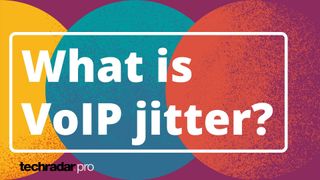Interview: Usain Bolt on gaming and Virgin Media hyper-fast Gig1 broadband “To see myself in 4k as a hologram was mind blowing"
Ultra fast Gig1 broadband from Virgin Media and Hologram tech is changing the world. Are you ready?
As Virgin Media O2 celebrates its superfast Gig1 broadband going into its 15 millionth UK home, it showed us just how speedy it is with high-quality PORTL hologram technology.
We get a glimpse into how the future of gaming is going to evolve, as they surprise a handful of lucky superfans with the hologram gaming experience and fastest-man-alive Usain Bolt to demonstrate the clear difference in speed with Gig1 broadband.
Holograms: the future of Gaming?
How hologram tech is changing the future for Gaming Influencers

Olympic sprinter Usain Bolt and Alex, a 16 year old up-and-coming British 100 metre sprinter from London—who happens to be a Bolt mega-fan—played online games with a twist as the Jamaican Olympic Gold medallist appeared virtually as a 4K hologram, giving the illusion that he was in the same room.
We asked Alex how he thought having hologram tech at home would change his gaming experience in the future:
“It would make the experience feel more real, as if my friends were really there with me in the room. I believe instead of speaking over the mic, speaking and seeing your friends through the PORTL will make the whole gaming experience much more enjoyable and sociable.”
Holograms: Public opinion
Survey: more than 60% cite gaming as favourite way to communicate

Today most gamers rely on headsets as their main means of communication while playing, but the PORTL hologram technology, powered by hyper-fast broadband from Virgin Media, allowed for improved teamwork as the lack of latency and the quality of the hologram was apparent.
New research from Virgin Media's hologram gaming campaign found that out of the 700 British people surveyed, more than half (60%) cite gaming as their new favourite way of communicating, with 40% preferring to game against friends via hologram than in person.
Get daily insight, inspiration and deals in your inbox
Get the hottest deals available in your inbox plus news, reviews, opinion, analysis and more from the TechRadar team.
As a self-proclaimed gamer, Bolt told TechRadar from the hologram gaming room: “To see myself in 4K as a hologram was mind blowing and I think Virgin Media is doing a great job moving forward with their broadband.
Gaming is the most popular genre of influencer content in APAC
YouGov
“This hologram is breaking barriers and the possibilities are endless. I have a feeling that people are going to use it a lot in the near future.”
Bolt also revealed that while he uses Virgin Media broadband in his home in the UK, he would very much like to see the broadband service provider in his hometown in Jamaica.
Premium broadband for hologram gaming
Fancy a future in Hologram tech? You'll need superfast internet

With all the glitz and glam that comes with hologram technology, it’s easy to be less concerned with what makes it all possible.
The three-dimensional image generated by interfering beams of light that reflect real, physical objects, is reliant on fast broadband to aid with the media and audio being transmitted.
The hologram gaming experience marked the completion of Virgin Media O2’s Gig1 broadband rollout to its entire network. Bringing to life the future of hyperfast broadband, 94% of gaming Brits are reliant on a good quality broadband connection, according to Virgin.
Speaking to Oliver Kibblewhite, founder of The 5Gs, he explains, “Gig1 enables superfast update speed so we don't have to spend literal time compressing that video down. If you are doing Zoom at home, your computer spends a lot of time compressing the video down to be as small as possible so it can fit up the sub-par internet quality you may have at home."
Holograms: changing how we connect
Holograms will allow us to connect and communicate differently

Bolt’s gaming opponent, Alex, said the hologram technology could help people connect in a more realistic and sociable way, especially during the pandemic.
“It would help businesses, organizations and people who use social media, to communicate in such a realistic way without travelling to see them, saving time and increasing productivity to a certain extent. Hologram tech is the future,” he added.
We’ve already seen injections of hologram technology in the past, including holographic maps of “battle-spaces” for the US army, as well as hologram gaming arcades.
Jeanie York, Chief Technology Officer at Virgin Media O2, said: “This incredible hologram technology, brought to life by the world’s fastest man Usain Bolt, shows just how far we have come in how we can engage, communicate and socialise in a virtual world.
“Our gigabit broadband speeds can power the British homes of today and the future which will continue to consume more cutting-edge technology over the coming years as we find new and innovative ways to stay connected to the people that mean the most."
Holograms: the future of business
Hologram tech is quietly becoming the standard of business communication
How often is your life grounded in an offline reality? It’s not a trick question, it’s a very normal one we could all be asking sooner than expected, thanks to advances in communications tech—especially in the workplace, and at home.
With all the recent fuss around the Metaverse, NFT popularization and a ramping up of remote working that has seen the majority of us shift to living more of our lives online, the notion of a second, virtual life is becoming ever more commonplace.
At the Facebook Connect October 2021 event Mark Zuckerberg happily shared his vision of the metaverse as one where we all engage “across different layers of reality.” Supporting his point, as of June 2021 over 70 million users across 200 countries had registered on the website of virtual world, Second Life.

In fact, at the peak of the pandemic in March 2020, Forbes found COVID-19 had raised American’s “internet use 70% and streaming more than 12%.” Meanwhile in the UK, the BBC reported that broadband use had doubled nationally in December 2020.
In response shortly afterward, multiple tech giants including YouTube and Facebook significantly lowered the quality of video streaming to reduce network strain in Europe. So the question for 2021 quickly became: as we increasingly live our lives online, how will network speeds bear the strain?
After all, network strain will continue to be a public challenge that affects the speed with which we can call colleagues, communicate with loved ones over FaceTime or simply send a WhatsApp message. To combat this, broadband provider Virgin Media is stepping up its network offering with superfast Gig1 Broadband.

To test the speed and quality of Gig1, we met up with Virgin Media and its brand ambassador eight time gold-medal winning sprinter Usain Bolt. Bolt and Virgin Media are currently celebrating Gig1 broadband being installed in the 15 millionth home in the UK.
To demonstrate just how fast the Gig1 broadband is, they were kind enough to invite us to try out hologram streaming tech PORTL.


Latency is the time it takes for one data packet to pass along its route. Network jitter is the delay to that latency, or what we usually call 'slow downloads' or 'glitches'. Learn more about latency and jitter over data networks, VoIP Quality of Service, how data packets work and what data packet loss is.
As Greg Furber, the Creative Director of Creative Agency The 5Gs explains to us, “Today we are here to use Virgin’s Gig1 to show the speed and the latency [of the superfast broadband] and to do that, we are using PORTL [made by a company with the same namesake], which is essentially a hologram box. It’s a 4K 60 screen, the only one in the UK and one of very few in Europe.
"It's a new technology that came out pre-pandemic and is slowly rolling out in two phases. The guy who did the famous Tupac Coachella (2012) hologram is the guy that went on to found PORTL, so it’s very much a progression of that kind of technology. The plan for the hologram is to have it everywhere, and it would also do well in the retail industry.”
We were set up in two separate rooms to play video games, with one of us being projected into the PORTL hologram box that stood right next to the other player in the corresponding room. Thanks to the superfast Gig1 broadband we were able to see each other with crystal clarity as a hologram and hold a conversation whilst playing a video game in real-time.

Greg explains what’s happening behind the scene to us, “The power of the [broadband] connection lets it run 200 milliseconds latency rather than a second or two where you get things like Zoom.
"This allows you to send a much less compressed signal, which gets out of the building a lot quicker, which means there is less latency on the line when it’s going where it needs to."
How holograms work
How hologram technology works
How exactly does the hologram technology work? Using the PORTL hologram tech and high end broadcast equipment The 5Gs team were able to transmit real-time “video signals and reduce latency on the encode and stream” of Usain Bolt to mega-fan Alex.
Businesses are already using holography
Holography tech as a business communication tool
Using hologram tech is nothing new, but the technological advances that have come from hologram development in recent years are allowing us to use the technology more everyday.
In our professional lives we are already seeing the impacts of hologram tech. The Microsoft HoloLens 2 is described as an “ergonomic, untethered self-contained holographic device with enterprise-ready applications to increase user accuracy and output.”
It has many potential uses, including training medical staff remotely for quicker onboarding of junior doctors, encouraging remotely-based office teams to collaborate more visually using hologram tech, as well as being another means of accessibility for those who have mobility impairments.
In October of 2021, Cisco also released plans for their own augmented reality headset tech, namely Webex Hologram. Of course they’re still trialling the software, and hologram tech can take a while to get right as we saw with the flop of the RED Hydrogen One mobile phone in 2018. So for now, it’ll still be the same standard VoIP-based business telecommunications as usual.
But as gamification becomes ever more favoured in employee training, and Gaming Influencers grow in popularity, hologram tech could be a part of our daily lives sooner than we think—just look at PORTL.
The 5Gs Creative Director, Greg Furber explains the benefits of Holography best, “with Virtual Reality (VR) and other shared space tech, they overlook the fact you need a headset on so there’s that barrier. This hologram is the closest you’ll get to ‘in person’.”
Usain Bolt: full interview
Listen to the full interview with TechRadar and Usain Bolt


Abigail is a B2B Editor that specializes in web hosting and website builder news, features and reviews at TechRadar Pro. She has been a B2B journalist for more than five years covering a wide range of topics in the technology sector from colocation and cloud to data centers and telecommunications. As a B2B web hosting and website builder editor, Abigail also writes how-to guides and deals for the sector, keeping up to date with the latest trends in the hosting industry. Abigail is also extremely keen on commissioning contributed content from experts in the web hosting and website builder field.
